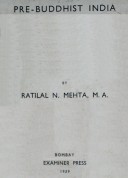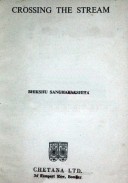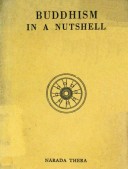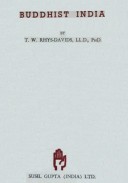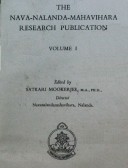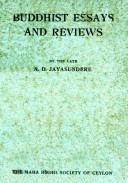Tìm Sách
Sách tiếng Anh-English >> Pre-Buddhist India
Thông tin tra cứu
- Tên sách : Pre-Buddhist India
- Tác giả : Ratilal N. Mehta
- Dịch giả :
- Ngôn ngữ : Anh
- Số trang : 456
- Nhà xuất bản : Examiner Press, Bombay India
- Năm xuất bản : 1939
- Phân loại : Sách tiếng Anh-English
- MCB : 1210000002817
- OPAC :
- Tóm tắt :
MCB: 1210000002817
Pages: 456
FOREWORD
INDIAN History is progressing fast in the direction of its object, the past. Some years ago the History of India began with Alexander’s campaign through the Panjab and the East. Then the rise of Buddhism and Jainism was added. The present book deals with a period prior to the appearance of Gautama and Mahãvĩra. The book is all the more welcome since the author has taken as a subject a portion of that period which has been styled “the Dark Ages of India.”
This denomination refers to the subjective state of ignorance of the students of history, rather than to the objective panorama of the past, which was not dark at all.
Illustrious kings ruled the country with justice and wisdom. Of one of them, Asvapati Kaikeya, who ruled in the North-Western area, the Chandogya Upanisad, V, 11, 5, states that when he got up in the morning he said: “In my country there are no thieves, nor misers, nor drunkards, nor people who do not perform sacrifices, nor ignorant, nor debauchees, nor much less harlots.” Such personal statement of the king himself is a credit to the excellent administration that India enjoyed in that early age. The student of history, while going through the pages of this book, will easily detect some of the principles that later on crystalized in the immortal Arthasastra of Kautalya, and which were so much admired by the Greek envoy Megasthenes.
The economic conditions of India were also prosperous. Agriculture, mining, fisheries, farming, cottage industries, building industries and other sources of wealth are described minutely, and sometimes with such abundance of detail as to make us believe we are living in those remote ages. Trade was brisk, and the reports we have about sea-voyages incline us to believe that it was the cause of many settlements of Indians abroad, both in the east and in the west.
Special interest is attached to the sociological conditions of the country, which may be wisely compared with those prevailing at present. The superiority 01 the kings in matters spiritual is indeed an eye-opener which has not been sufficiently accounted for. Those good administrators of the country were also profound thinkers and wise philosophers, at whose school many eminent brãhmanas learned the secrets of the ancient lore of India. Some authors have seen in them representatives of the old pre- Aryan rulers of the country, and if this view is finally accepted, it will lead us to revise our opinion about the origin of Indian philosophy and asceticism. Such kings, whose intellectual pursuits still shine after perhaps thirty centuries, fostered liberal education in their dominions. It was precisely during this period that the first asrama of life was constituted on practical bases. The agglomerations of Brahmacãrins in the same towns were the nuclei of all those ancient famous centres of learning, the main ones being Takasỉlã and Vãrãnasĩ, which were rivalled by Nãlandã, Odantapura, Vallabhipura and others in a subsequent historical period.
This one, the history of which Mr. Ratilal N. Mehta presents to the public to-day, is a period of extraordinary importance, during which the final amalgamation of the two main races of India the Drãvidians and the Aryans, which began in the Vedio period, was accomplished. The student of Proto-Indian History will easily discover the constituent elements of this amalgamation in many pages of this book. This is a subject of research which Mr. Mehta had neither time nor opportunity to study in the course of his post-graduate research. It was totally outside the scope of his work. Other students may undertake it, and the country will be grateful to them for it. It is a subject about which much darkness still prevails in the minds of many.
The main source of information which the author has tapped has been the collection of Buddhist stories of the pre- births of the Buddha, called the Jatakas. These stories undoubtedly depict conditions and situations of a period of time prior to that of the revered teacher. The fact that similar episodes are at times found in the Jãtakas and in the Mahãbhãrala seems to point to a common older source, which is now lost. About the historicity of these stories we cannot doubt at present. The very incidental way in which they are narrated, 18 a guarantee of their trustworthiness and accuracy. Whenever the mythical element is introduced, it is easily detected.
The work of Mr. Katilal N. Mehta is a credit to him and to this Institute, his Alma Mater. His views are always impartial, his method is faultless, his criticism well founded and precise.
I hope that his work will be widely read throughout this country, and abroad, and help to dispel the darkness still perhaps existing in some minds, and to disclose the brilliancy of that ancient culture which was the foundation of the culture and achievements of the Indians of later periods.
H. HERAS, S. J.
Indian Historical Research Institute,
St. Xavier’s College, Bombay.
July 23, 1939
CONTENTS
Foreword
Author’s Preface
Bibliography
Tracing Up
SECTION I – GLIMPSES OF POLITICAL HISTORY
Introduction
Chapter I. The Ancient Period
Chapter II. The Kuru-Pancãla Kings
Chapter III. Videha AND THE Lesser Kingdoms
Chapter IV. The Mahajanapada Period
SECTION II – ADMINISTRATIVE ORGANISATION
Introduction
Chapter I. Political Atmosphere
Chapter II. Central Administration
Chapter III. Fiscal Administration
Chapter IV. Administration Of Justice
Chapter V. Military Organisation
Chapter VI. Local Government
SECTION III – ECONOMIC ASPECTS
Introduction
Chapter I. Production
Chapter II. Distribution
Chapter III. Exchange
Chapter IV. Consumption
SECTION IV – SOCIOLOGICAL CONDITIONS
Introduction
Chapter I. The Social Structure
Chapter II. The Family
Chapter III. Friends and Relations
Chapter IV. Position Of Woman
Chapter V. Education
Chapter VI. Arts and Sciences
Chapter VII. Religion and Philosophy
Chapter VIII. Manners and Customs
SECTION V – GEOGRAPHY OF THE JÃTAKAS
Introduction
Chapter I. General Outlook
Chapter II. Divisions Of India
Chapter III. Geographical Lexicon
Summing Up
 Facebook
Facebook
 Google
Google
 Google+
Google+
